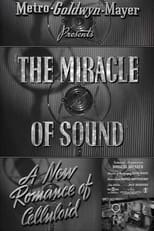

Douglas Shearer
Born: November 17, 1899
Died: January 6, 1971
in Westmount, Québec, Canada
Died: January 6, 1971
in Westmount, Québec, Canada
Douglas Graham Shearer (November 17, 1899 – January 5, 1971) was a Canadian-American pioneering sound designer and recording director who played a key role in the advancement of sound technology for motion pictures. He won seven Academy Awards for his work. In 2008, he was inducted into Canada's Walk of Fame.
Douglas began his journey into cinema by studying experimental electricity at Northern Electric Company before joining MGM in 1925. Initially exploring lighting and cameras, he pivoted to sound when the era of sound pictures emerged in 1928. He pioneered synchronizing musical soundtracks with film scenes, notably in the groundbreaking "The Broadway Melody," which won the 1929 Oscar for Best Picture. As head of MGM's sound department until his retirement, Shearer revolutionized sound recording, winning an Academy Award for Best Sound Recording for "The Big House." His groundbreaking work at MGM significantly enhanced the technical aspects of filmmaking. His legacy was recognized even in death, receiving a front-page obituary in The New York Times—an honour typically reserved for industry giants and heads of state.
Douglas began his journey into cinema by studying experimental electricity at Northern Electric Company before joining MGM in 1925. Initially exploring lighting and cameras, he pivoted to sound when the era of sound pictures emerged in 1928. He pioneered synchronizing musical soundtracks with film scenes, notably in the groundbreaking "The Broadway Melody," which won the 1929 Oscar for Best Picture. As head of MGM's sound department until his retirement, Shearer revolutionized sound recording, winning an Academy Award for Best Sound Recording for "The Big House." His groundbreaking work at MGM significantly enhanced the technical aspects of filmmaking. His legacy was recognized even in death, receiving a front-page obituary in The New York Times—an honour typically reserved for industry giants and heads of state.
Movies for Douglas Shearer...

Title: The Great Morgan
Character: Douglas Shearer (uncredited)
Released: January 1, 1945
Type: Movie
Frank Morgan is hired to put together a movie using odds and ends from the MGM vaults. He does so by splicing together a string of completely unrelated short subjects and musical numbers, interspersed with a repeated loop of a scene from some melodrama. (Contains in their entirety the shorts, "Musical Masterpieces," "Our Old Car," and "Badminton," as well as clips from other projects)


Title: A New Romance of Celluloid: The Miracle of Sound
Character: Self
Released: October 24, 1940
Type: Movie
This short documentary, presented and directed by MGM sound engineer Douglas Shearer, goes behind the scenes to look at how the sound portion of a talking picture is created.
